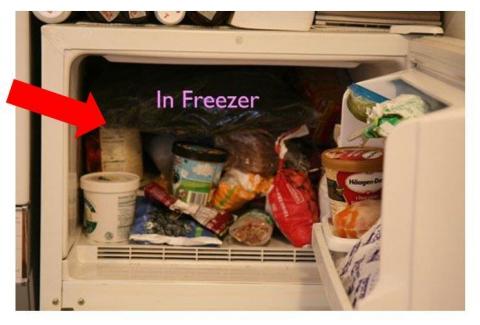Jennifer Dejarme of DOST-Caraga showed this picture as an example of stacking food in fridge the wrong way. Ready-to-eat foods should be separated from meat products.
BUTUAN CITY – A wrong way of stacking your food in the fridge can be dangerous. This was learned from Jennifer Dejarme, Senior Science Research Specialist from the Department of Science and Technology (DOST) Caraga region. Dejarme was a guest speaker in the webinar entitled Food Safety Awareness and Processing: Cross-Contamination last October 16, 2020 hosted by ATI-RTC 13 via Google Meet. It was Dejarme’s third speakership in the 4th season of the webinar series dubbed as Internet-Based Intervention for the Development of Agriculture ng ATI Ngayon (i-BIDA nATIn).
Dejarme defined cross-contamination in food as a “type of cross-contamination most frequently implicated in food-borne illness and occurs when pathogenic bacteria or viruses are transferred to ready-to-eat foods.” Contaminants can be transferred directly when one food touches or drips onto another such as contaminated blood of a fish inside a refrigerator dripping onto an uncovered food on the lower shelf. But Dejarme added that contamination can also occur via unsanitized hands, equipment, work surfaces, and food contact surfaces (e.g. knives, clothes). According to a WHO study, around 10% of disease outbreaks are caused by cross contaminations. Examples of illnesses that may be possible in cross-contamination include Botulism, Campylobacteria, Cryptosporidium, E. Coli, Giardiasis, Listeriosis, Norovirus and Salmonella. The last three may cause death in humans.
To avoid cross-contamination in food, Dejarme advised to properly wash hands before handling food; separate unwashed fruits and vegetables from the washed and other ready-to-eat food; separate cutting boards for chicken, fish, meat, and produce; wash, rinse, sanitize, and air dry all food contact surfaces, equipment, and utensils that will be in contact with food such as fresh produce.

